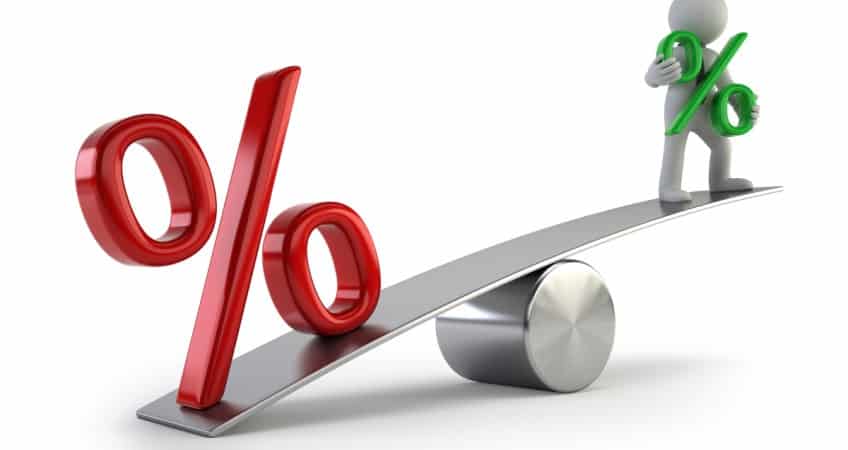
Ease the Squeeze
The good news is interest rates are at record lows. The bad news is the average mortgage size in most Australian capitals has hit an all-time high. The challenge for many borrowers who are used to low rates could be keeping up with payments when rates inevitably rise. Those who want to get ahead will be taking steps now to make the most of low rates so they have a buffer down the track. But if you are already feeling weighed down by debt, it may be time to lighten the load.
Shop around
Even in a low-rate environment, savings count. Talk to your broker about getting a sharper deal with your existing lender or another. Just make sure you do your sums on any switching fees to ensure the new offer stacks up.
Borrow as little as possible
Some lenders will accept just a 10 per cent deposit, which can be alluring in today’s escalating property market. But what you appear to gain with a lower deposit, you lose on higher repayments on a larger loan and the cost of Lenders Mortgage Insurance (LMI), which is charged to the borrower when a loan exceeds 80 per cent of the property’s value. It protects the lender if the borrower defaults on the loan and can run into the thousands, depending on the loan size.
Having scrimped and saved for a sizeable deposit, it may also be tempting for first-home-buyers to bundle stamp duty and legal fees into the loan, but the more you can pay upfront, the more you save in the long run.
Ignore rate drops
It’s tempting to splash the extra cash when interest rates drop, but it’s wiser to inject the savings back into your mortgage. A rate dip from 6 per cent to 5.5 per cent on a $300,000 principal and interest loan over 25 years saves you $90 a month, or more than $1,000 a year. If you sink that money into your loan by continuing to make payments at the higher rate, you will save more than $27,000 in interest and shave more than two years off the loan. It also gives you a buffer should interest rates rise and you need to draw down on the over-payments. Just check your loan has a redraw facility.
Ditch the debt
Despite low interest rates, Australia’s household debt compared with our income is historically high. In 2012, the average Australian household owed 1.73 times its gross disposable income for a year. That’s not only high by our standards, it’s high compared to other developed economies such as Canada, Germany and the UK1. Part of the problem is our high cost of housing, but also our capacity to run up other debt, including high-interest credit cards.
One of the most effective ways to ease your financial burden is to pay down your highest interest debts first. If you are paying 19 per cent on your credit card and just 5 per cent on your mortgage, it makes sense to get rid of the plastic debt first. Check your next credit card statement to see how much interest you will pay and how long it will take to pay the card off in full if you just make the minimum payment each month. Once your cards are cleared, you will have more funds to sock into your mortgage and pay it off faster.
Pay fortnightly
Perhaps the simplest way to save on your mortgage is to make repayments fortnightly instead of monthly.
Paying fortnightly allows you to squeeze in the equivalent of an extra monthly repayment per year. Let’s say your monthly repayment is $2,000 or $24,000 per year. If you paid $1,000 a fortnight instead, you would actually pay $26,000 over the year (26 fortnights in a year versus 12 months). That’s $2,000 extra in loan repayments each year, which will help you pay off the principal faster.
Make your loan work for you
Consider an all-in-one or offset account to help pay off your loan quicker. An all-in-one loan account effectively turns your mortgage into a savings account, providing you understand and maximise how it works. An all-in-one account generally allows you to pay your salary and any other earnings (such as rental income) into the loan so anything left over automatically reduces the amount owed and therefore the amount of interest you pay. The more money you keep in the account, the lower your interest payments. You can take further advantage of this set up by using a credit card for as many expenses as possible and paying it off in full during the interest-free period. That way you maximise how much you have in the loan account for as long as possible, with interest calculated daily but charged monthly. It’s essential, however, you spend within your means and clear your credit card debt each month. If you struggle to budget or manage credit, you may be better off sticking to a more traditional principal and interest loan.
A 100 per cent offset account generally works in a similar way, allowing you to use your savings to reduce the principal on the loan. Any savings are deducted monthly from the amount owed to calculate your interest payment. If, for example, you have a $120,000 loan and $10,000 in your offset savings, you would pay interest on $110,000 instead of the full $120,000.
Both of these types of loans can help build a savings buffer to give you wriggle room if your income drops or you have unexpected expenses. But make sure you read and understand the terms and conditions before signing up to ensure you understand any restrictions or conditions that will apply. The key, though, as always, is to save more than you spend!
Speak up if times get tough
If you hit hard times, talk to your lender sooner rather than later as it’s in both your interests to find a solution. Many lenders will give you breathing space by extending the life of the loan or switching to interest-only payments for a period.
1 www.abs.gov.au/ausstats/ ABS 4102.0 – Australian Social Trends, 2014
